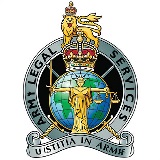*/

James Pereira KC on the collaborative essence of a barrister’s role and five practical tools to make us all better leaders and team-players
Life at the Bar is often a rather solitary affair. The archetypal barrister is more lone wolf than collaborative team-player. The self-employed structure, competitive culture and high levels of individual responsibility lend themselves all too easily to an imagined self-image where the client’s fate rests on our solitary shoulders as we bravely step forth to take up arms on their behalf. Sitting alone in the dead of night on the eve of trial our souls know too well the seduction of our calling, the joy it brings, and the price we pay for it.
Yet if we open our eyes and snap out of our trance, we see at once that reality is rather different. All of us depend upon the support, hard work and skills of others to function from day-to-day. A little reflection and we soon realise that our successes very often stand on the shoulders of others. We should take this as reassuring, supportive encouragement. None of us stands alone except in our imaginations.
Importantly, the collaborative essence of our role is not merely a fact of professional life. It is also one of the professional qualities which the regulator holds us to in assessing our competency as practitioners. The Bar Standards Board’s (BSB’s) Professional Statement for Barristers, which applies to all barristers in private practice, has an entire section on working with others – which is also one of the key competencies for silk. The BSB Professional Statement says that we are all expected to ‘understand and apply principles of team working where appropriate.’ These requirements are then spelt out in detail (see box, below).
This list may surprise many since it assumes a level of understanding beyond what most of us are taught in bar school or pupillage. Fortunately, just like advocacy, team working is a skill that can be learned, practised and refined over time. So here are five essential, relevant and practical tools, well-known in team and leadership coaching, that you can use straight away in your professional life.
People in groups are hard-wired to protect their belonging. This means that they will tend to hold back from participating in ways which makes them vulnerable to challenge, criticism and conflict, or which risks their competency or continued participation in the group being questioned. You can test this yourself by reflecting on how easy it is for you to say to say to your team ‘I don’t know’ when asked a question about law, procedure or case strategy. The innate tendency to cover in this way can be exacerbated in particular groups, such as ethnic minorities (who may already feel marginalised), junior members (who may feel more than others that their right to belong is contingent on performance) and experts (who may feel that their role demands authoritative knowledge whether or not they have it).
The problem is that teams of closed individuals will under-perform. Creative problem solving requires risk taking. Understanding the weaknesses in the case requires witnesses to speak up about them. Course correcting requires someone to be brave enough to say, ‘I think that’s wrong.’ And just like the Emperor’s New Clothes, sometimes it takes the innocent mind of the junior to set things right.
So what is a safe team culture and how can it be created and sustained?
To build healthy team dynamics there must be a safe ‘container’ to operate in. The container sets the ground rules and standards for communication and behaviour within the team. Rules and standards which support healthy team dynamics are those which make team members feel safe and valued. Leaders can create team culture by simply modelling the behaviour themselves. (‘If I show I can listen to the team, it will encourage people to speak up.’) In this way, culture can grow organically over time. Alternatively, you can create the culture deliberately, collaboratively and expressly by agreeing with the team what the ground rules and cultural values of the group will be when it is working together.
When it comes to modelling behaviour, the following are helpful to display:
For more depth and detail see the article ‘Psychological safety’ (James Pereira KC and Zita Tulyahikayo, Counsel, January 2022).
It is often said that barristers like the sound of their own voices. We tend to be better talkers than listeners. Yet successful team working demands active and effective listening skills. There are lots of different listening tools that we can employ. One versatile tool is the ‘Three Levels of Listening’. In essence this distinguishes between three types of listening depending on what we are listening out for and how open or receptive we are in our listening process.
Remember when you were at school and the teacher asked a question? Once you were ready with your answer, your hand went up and you stopped listening. The desire to speak took control.
When we listen to respond, we pay attention to the words we think will lead us to the answer, and filter out the rest. Once we have our answer, we feel we don’t need to listen anymore. Instead, we focus on finding space to speak.
Listening to respond is an essential listening skill. It is the mode we usually employ when in court being questioned by judges. But it can cut off deeper listening. It denies us access to better information and fuller understanding, and its tendency to self-affirm often leads to break-downs in communication.
What happens if we relieve ourselves of the need to respond, and listen with the simple intention of understanding the speaker?
When we listen to understand, we engage in communication with curiosity, openness and nonjudgment. We are attentive not just to language, but to tone, posture and other cues. We hold a space where the speaker feels heard and seen.
When listening to understand we carry the conversation along with open questions like: ‘What happened next?’ ‘How did that feel?’ ‘What did you do?’ ‘I’m curious about...’ ‘Tell me more about...’
Listening to understand is a gift to the speaker and the listener. It builds deeper connection, trust and understanding. People feel heard. For this reason, it is often the main listening mode we should be employing in conferences and team meetings, at least in the early phases of a process where we are information gathering. Listening to understand also helps build rapport and safety, creating an open, welcoming culture. This in turn lowers barriers to contributions and thus generates greater value from the team.
Where is the conversation going and what is emerging from it?
When we listen to see what needs to change, we engage in the potential for solutions. We hold a space for possibilities, for the unfolding of future potential. Silence, play and creativity are useful companions in this space.
We carry the conversation along with enquiries like ‘What would happen if...?’ ‘How would you feel about...?’ ‘How would it be different if...?’ ‘What do we need? What are we missing?’
This level of listening connects the team to the possibilities of the emerging future, to growth and to renewal. It supports movement. It is an essential part of solutions-focussed leadership and team work.
How can we use this tool in our day to day? The starting point is simple: be actively aware and conscious of how you are listening. Be purposeful in which listening mode you use and that you encourage from the team. Adapt your listening to the needs of situation at hand. A conference on strategy at the outset of a case is likely to call for different listening skills than a conference to dot I’s and cross t’s on the eve of trial. Cross-examination is likely to require the capacity to call upon all three levels at once, leaning into one or other as the witness’s responses demand.
Teams are formed for a purpose and their purpose demands that certain roles be performed within the team, irrespective of whether or not someone is formally appointed to that role. For example, whether a case is being conducted in person, by direct public access or by instructions from a solicitor, someone has to file papers with the court and attend to the preparation of the bundles. In team sport, if a player is sent off, the other team members will naturally adjust to fill in for the missing member, and a failure to do so will undermine the team’s performance. Understanding that teamwork demands certain roles is fundamental to successful leadership and team work because it helps us understand the strengths and weaknesses of the teams we work in (and our opponent’s team), and this in turn helps us plan and resource cases effectively.
Arising from this simple point there are some helpful rules of thumb which we need to be aware of and I will mention three here.
First, in every team there are hidden roles. Hidden roles are the team functions being performed behind the scenes or beyond the official role of the team member. Often these have an energetic quality. Examples might be the devil’s advocate (the person always challenging or bringing a cautionary voice to the team); the carer (the person always looking out for the wellbeing or needs of other team members); and the rebel (the person always vying for change and seemingly at the edge of the team). Looking out for, listening to and valuing these hidden roles provides valuable information. The devil’s advocate helps us plan and prepare better; the carer alerts us to underlying needs within the team that may need attending to; the rebel can bring valuable information outside of the mainstream or conventional perspective, helping us to be more creative and aware.
Secondly, legacy and history – so called ‘ghost roles’ – often play an important part in team dynamics. Ghost roles are energetic roles that remain influential within a team after the person who held the role has left. A typical ghost role would arise in a case where we are brought on to replace earlier counsel who has been removed from the case. While formally our predecessor is no longer present as a team member, energetically their role remains in the collective memory of the team, their perspectives and their expectations. These can work against us unless we attend to them. For example, if our predecessor was removed from the case for being perceived as too gentle an advocate or not enough of a team player, our own performance as an advocate and leader will be judged against theirs. In these kinds of situations we need to understand the background to our appointment, what went wrong before, and what the client would like from us now. We need to have frank and open conversations about the lessons learned, including how the workings of the team may need to change to support the outcomes being sought. In this way we can release the ghost from within the team.
Thirdly, it is important not to confuse the person (or personal) with the role. Because a team role is a systemic function, it will demand certain things if it is to be performed competently, irrespective of who happens to be appointed to perform the role. For example, a certain level of time, expertise, instructions, information and deliberation may be required for an expert to prepare evidence or a barrister to write an advice, because that is what the nature of the work within its context demands. By recognizing that successful performance is the discharge of a role rather than a purely personal endeavour, we are less likely to get caught up in feelings of personal inadequacy and more likely to feel empowered to request the support and assistance that we need. Similarly, as leaders supporting a team, we are more likely to be open and receptive to understanding and securing the support that our team members need (and they are more likely to be able to ask for that support), if we see their request as necessitated by their role rather than a personal lack on their part.
As barristers we are accustomed to receiving instructions with questions which we are expected to advise upon in meetings. We are also well trained to work out what we need to run a case and to advise our client teams on the work that needs to be done to further our clients’ objectives. While these skills ensure that we attend to the substance of what needs to be done, we are less skilled at attending to the form or process of doing it. Meeting planning is an essential tool to ensure that form and process compliment substance.
One helpful meeting planning tool is expressed by the mnemonic POST, where P = purpose of the meeting; O = outputs needed from the meeting; S = structure for the meeting; T= timing of the meeting overall and items within it. POST provides a basic and reliable framework for drawing up a meeting plan – perhaps in discussion with your instructing solicitor and wider team – which in turn can feed into an effective agenda.
Agendas are important and I would recommend that every meeting however small has one. This may seem like an obvious piece of advice to give but in my experience both as a practitioner, coach and trainer the use of agendas is patchy among barristers, their function often gets confused with instructions, and when the use of agendas is discussed it tends to be seen as something solicitors should arrange and so not the barrister’s responsibility. But if you want to lead effectively, you sometimes have to take the lead too.
Agendas serve a number of important functions that compliment the substance of whatever it is your instructions or role require of you. These include:
Whatever points form the bulk of your agenda a helpful practice is to book-end the agenda with introductions (item 1) and AOB (last item). Starting with introductions helps ensure people can ease into the meeting and raise points of concern at the outset (for example, time constraints on their attendance). Ending with AOB ensures that there is formal space and allocated time to mop up or to catch loose ends as necessary.
None of us fully knows how well we perform or how we can improve without seeking feedback from others. Make a habit of checking in with your instructing solicitor and team as you work together on a case, so that you can mop up and adapt, and both your and the team’s performance can improve as you go along. Having wash up sessions after cases or significant parts of cases can help here. Being reflective when things have ‘gone wrong’ is essential. If the team has a safe culture (tool 1), good listening skills (tool 2) and understands roles (tool 3), these matters are easy and enjoyable to discuss from a collaborative perspective of joint responsibility without the need for personalisation or blame.

Life at the Bar is often a rather solitary affair. The archetypal barrister is more lone wolf than collaborative team-player. The self-employed structure, competitive culture and high levels of individual responsibility lend themselves all too easily to an imagined self-image where the client’s fate rests on our solitary shoulders as we bravely step forth to take up arms on their behalf. Sitting alone in the dead of night on the eve of trial our souls know too well the seduction of our calling, the joy it brings, and the price we pay for it.
Yet if we open our eyes and snap out of our trance, we see at once that reality is rather different. All of us depend upon the support, hard work and skills of others to function from day-to-day. A little reflection and we soon realise that our successes very often stand on the shoulders of others. We should take this as reassuring, supportive encouragement. None of us stands alone except in our imaginations.
Importantly, the collaborative essence of our role is not merely a fact of professional life. It is also one of the professional qualities which the regulator holds us to in assessing our competency as practitioners. The Bar Standards Board’s (BSB’s) Professional Statement for Barristers, which applies to all barristers in private practice, has an entire section on working with others – which is also one of the key competencies for silk. The BSB Professional Statement says that we are all expected to ‘understand and apply principles of team working where appropriate.’ These requirements are then spelt out in detail (see box, below).
This list may surprise many since it assumes a level of understanding beyond what most of us are taught in bar school or pupillage. Fortunately, just like advocacy, team working is a skill that can be learned, practised and refined over time. So here are five essential, relevant and practical tools, well-known in team and leadership coaching, that you can use straight away in your professional life.
People in groups are hard-wired to protect their belonging. This means that they will tend to hold back from participating in ways which makes them vulnerable to challenge, criticism and conflict, or which risks their competency or continued participation in the group being questioned. You can test this yourself by reflecting on how easy it is for you to say to say to your team ‘I don’t know’ when asked a question about law, procedure or case strategy. The innate tendency to cover in this way can be exacerbated in particular groups, such as ethnic minorities (who may already feel marginalised), junior members (who may feel more than others that their right to belong is contingent on performance) and experts (who may feel that their role demands authoritative knowledge whether or not they have it).
The problem is that teams of closed individuals will under-perform. Creative problem solving requires risk taking. Understanding the weaknesses in the case requires witnesses to speak up about them. Course correcting requires someone to be brave enough to say, ‘I think that’s wrong.’ And just like the Emperor’s New Clothes, sometimes it takes the innocent mind of the junior to set things right.
So what is a safe team culture and how can it be created and sustained?
To build healthy team dynamics there must be a safe ‘container’ to operate in. The container sets the ground rules and standards for communication and behaviour within the team. Rules and standards which support healthy team dynamics are those which make team members feel safe and valued. Leaders can create team culture by simply modelling the behaviour themselves. (‘If I show I can listen to the team, it will encourage people to speak up.’) In this way, culture can grow organically over time. Alternatively, you can create the culture deliberately, collaboratively and expressly by agreeing with the team what the ground rules and cultural values of the group will be when it is working together.
When it comes to modelling behaviour, the following are helpful to display:
For more depth and detail see the article ‘Psychological safety’ (James Pereira KC and Zita Tulyahikayo, Counsel, January 2022).
It is often said that barristers like the sound of their own voices. We tend to be better talkers than listeners. Yet successful team working demands active and effective listening skills. There are lots of different listening tools that we can employ. One versatile tool is the ‘Three Levels of Listening’. In essence this distinguishes between three types of listening depending on what we are listening out for and how open or receptive we are in our listening process.
Remember when you were at school and the teacher asked a question? Once you were ready with your answer, your hand went up and you stopped listening. The desire to speak took control.
When we listen to respond, we pay attention to the words we think will lead us to the answer, and filter out the rest. Once we have our answer, we feel we don’t need to listen anymore. Instead, we focus on finding space to speak.
Listening to respond is an essential listening skill. It is the mode we usually employ when in court being questioned by judges. But it can cut off deeper listening. It denies us access to better information and fuller understanding, and its tendency to self-affirm often leads to break-downs in communication.
What happens if we relieve ourselves of the need to respond, and listen with the simple intention of understanding the speaker?
When we listen to understand, we engage in communication with curiosity, openness and nonjudgment. We are attentive not just to language, but to tone, posture and other cues. We hold a space where the speaker feels heard and seen.
When listening to understand we carry the conversation along with open questions like: ‘What happened next?’ ‘How did that feel?’ ‘What did you do?’ ‘I’m curious about...’ ‘Tell me more about...’
Listening to understand is a gift to the speaker and the listener. It builds deeper connection, trust and understanding. People feel heard. For this reason, it is often the main listening mode we should be employing in conferences and team meetings, at least in the early phases of a process where we are information gathering. Listening to understand also helps build rapport and safety, creating an open, welcoming culture. This in turn lowers barriers to contributions and thus generates greater value from the team.
Where is the conversation going and what is emerging from it?
When we listen to see what needs to change, we engage in the potential for solutions. We hold a space for possibilities, for the unfolding of future potential. Silence, play and creativity are useful companions in this space.
We carry the conversation along with enquiries like ‘What would happen if...?’ ‘How would you feel about...?’ ‘How would it be different if...?’ ‘What do we need? What are we missing?’
This level of listening connects the team to the possibilities of the emerging future, to growth and to renewal. It supports movement. It is an essential part of solutions-focussed leadership and team work.
How can we use this tool in our day to day? The starting point is simple: be actively aware and conscious of how you are listening. Be purposeful in which listening mode you use and that you encourage from the team. Adapt your listening to the needs of situation at hand. A conference on strategy at the outset of a case is likely to call for different listening skills than a conference to dot I’s and cross t’s on the eve of trial. Cross-examination is likely to require the capacity to call upon all three levels at once, leaning into one or other as the witness’s responses demand.
Teams are formed for a purpose and their purpose demands that certain roles be performed within the team, irrespective of whether or not someone is formally appointed to that role. For example, whether a case is being conducted in person, by direct public access or by instructions from a solicitor, someone has to file papers with the court and attend to the preparation of the bundles. In team sport, if a player is sent off, the other team members will naturally adjust to fill in for the missing member, and a failure to do so will undermine the team’s performance. Understanding that teamwork demands certain roles is fundamental to successful leadership and team work because it helps us understand the strengths and weaknesses of the teams we work in (and our opponent’s team), and this in turn helps us plan and resource cases effectively.
Arising from this simple point there are some helpful rules of thumb which we need to be aware of and I will mention three here.
First, in every team there are hidden roles. Hidden roles are the team functions being performed behind the scenes or beyond the official role of the team member. Often these have an energetic quality. Examples might be the devil’s advocate (the person always challenging or bringing a cautionary voice to the team); the carer (the person always looking out for the wellbeing or needs of other team members); and the rebel (the person always vying for change and seemingly at the edge of the team). Looking out for, listening to and valuing these hidden roles provides valuable information. The devil’s advocate helps us plan and prepare better; the carer alerts us to underlying needs within the team that may need attending to; the rebel can bring valuable information outside of the mainstream or conventional perspective, helping us to be more creative and aware.
Secondly, legacy and history – so called ‘ghost roles’ – often play an important part in team dynamics. Ghost roles are energetic roles that remain influential within a team after the person who held the role has left. A typical ghost role would arise in a case where we are brought on to replace earlier counsel who has been removed from the case. While formally our predecessor is no longer present as a team member, energetically their role remains in the collective memory of the team, their perspectives and their expectations. These can work against us unless we attend to them. For example, if our predecessor was removed from the case for being perceived as too gentle an advocate or not enough of a team player, our own performance as an advocate and leader will be judged against theirs. In these kinds of situations we need to understand the background to our appointment, what went wrong before, and what the client would like from us now. We need to have frank and open conversations about the lessons learned, including how the workings of the team may need to change to support the outcomes being sought. In this way we can release the ghost from within the team.
Thirdly, it is important not to confuse the person (or personal) with the role. Because a team role is a systemic function, it will demand certain things if it is to be performed competently, irrespective of who happens to be appointed to perform the role. For example, a certain level of time, expertise, instructions, information and deliberation may be required for an expert to prepare evidence or a barrister to write an advice, because that is what the nature of the work within its context demands. By recognizing that successful performance is the discharge of a role rather than a purely personal endeavour, we are less likely to get caught up in feelings of personal inadequacy and more likely to feel empowered to request the support and assistance that we need. Similarly, as leaders supporting a team, we are more likely to be open and receptive to understanding and securing the support that our team members need (and they are more likely to be able to ask for that support), if we see their request as necessitated by their role rather than a personal lack on their part.
As barristers we are accustomed to receiving instructions with questions which we are expected to advise upon in meetings. We are also well trained to work out what we need to run a case and to advise our client teams on the work that needs to be done to further our clients’ objectives. While these skills ensure that we attend to the substance of what needs to be done, we are less skilled at attending to the form or process of doing it. Meeting planning is an essential tool to ensure that form and process compliment substance.
One helpful meeting planning tool is expressed by the mnemonic POST, where P = purpose of the meeting; O = outputs needed from the meeting; S = structure for the meeting; T= timing of the meeting overall and items within it. POST provides a basic and reliable framework for drawing up a meeting plan – perhaps in discussion with your instructing solicitor and wider team – which in turn can feed into an effective agenda.
Agendas are important and I would recommend that every meeting however small has one. This may seem like an obvious piece of advice to give but in my experience both as a practitioner, coach and trainer the use of agendas is patchy among barristers, their function often gets confused with instructions, and when the use of agendas is discussed it tends to be seen as something solicitors should arrange and so not the barrister’s responsibility. But if you want to lead effectively, you sometimes have to take the lead too.
Agendas serve a number of important functions that compliment the substance of whatever it is your instructions or role require of you. These include:
Whatever points form the bulk of your agenda a helpful practice is to book-end the agenda with introductions (item 1) and AOB (last item). Starting with introductions helps ensure people can ease into the meeting and raise points of concern at the outset (for example, time constraints on their attendance). Ending with AOB ensures that there is formal space and allocated time to mop up or to catch loose ends as necessary.
None of us fully knows how well we perform or how we can improve without seeking feedback from others. Make a habit of checking in with your instructing solicitor and team as you work together on a case, so that you can mop up and adapt, and both your and the team’s performance can improve as you go along. Having wash up sessions after cases or significant parts of cases can help here. Being reflective when things have ‘gone wrong’ is essential. If the team has a safe culture (tool 1), good listening skills (tool 2) and understands roles (tool 3), these matters are easy and enjoyable to discuss from a collaborative perspective of joint responsibility without the need for personalisation or blame.
James Pereira KC on the collaborative essence of a barrister’s role and five practical tools to make us all better leaders and team-players

What’s it really like to work in the National Crime Agency’s in-house legal team? TM, a lawyer in the NCA’s Financial Disruptions Litigation team, shares a day in her life

By the Chartered Governance Institute UK Ireland

Q and A with Major Susie Brooke, Legal Officer in Army Legal Services

Have you considered being a barrister in the British Army? Here’s an insight into a career in Army Legal Services

Clare describes her journey from Crown Prosecution Service legal trainee to Senior Crown Prosecutor, a typical ‘day in the life’ and the inspiration she draws from her career

What's it like being a legal trainee at the Crown Prosecution Service? Amy describes what drew her to the role, the skills required and a typical day in the life